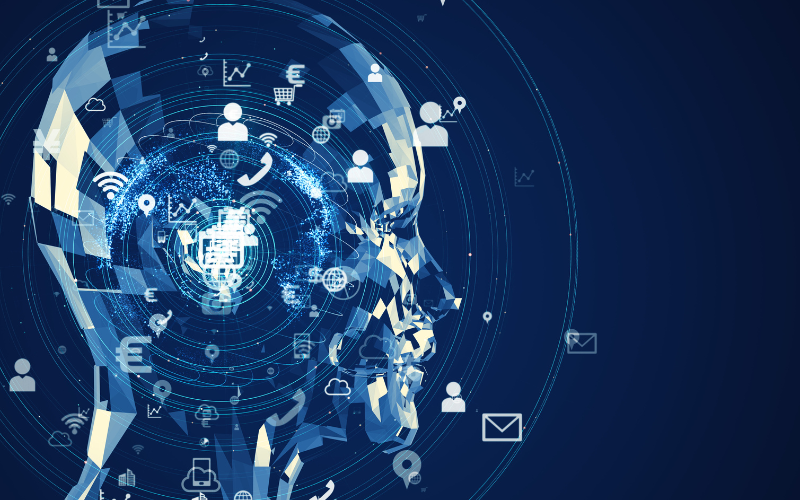Why AI is Key to Ensuring IoT Security in the Digital Age

The Internet of Things (IoT) has become an integral part of our daily lives, from smart homes to connected cars and beyond. However, with the increasing number of connected devices, the risk of security breaches has also grown.
That’s where Artificial Intelligence (AI) comes in, providing a powerful tool for enhancing IoT security. By allowing networks and devices to learn from past decisions, predict future activity, and continuously improve performance and decision-making capabilities, AI unlocks the true potential of IoT. With this in mind, let’s explore the crucial role of AI in securing the IoT landscape and how this convergence of technologies is shaping the future of our connected world.
The Cybersecurity Skills Shortage
According to a 2022 workforce study, the global shortage of skilled cybersecurity professionals has more than doubled since 2019, leaving a gap of 3.4 million professionals. It’s a dire situation and one that’s impacting IoT security significantly.
The shortfall in qualified cybersecurity personnel means that many organizations are struggling to keep pace with the evolving cyber threat landscape and implement adequate security measures to protect their IoT devices. The consequences of this skills gap are profound, with potential security breaches and data theft leaving organizations and individuals exposed to significant risks.
But by converging AI and IoT security, we can reduce the impact of this skills gap. AI can help automate security processes and reduce the burden on human experts, while IoT devices can generate valuable data to train AI models. Over time, these models will become skilled at detecting threats and anomalies and shutting down cyber attacks swiftly.
How Attackers Target IoT Devices
Attackers use various methods to target IoT devices, and understanding these methods is crucial for developing effective cybersecurity strategies. Some common methods include:
- Initial reconnaissance: Attackers scan the network to identify vulnerable devices they can target.
- Physical attacks: Attackers can use a variety of physical attacks to disrupt the functionality of IoT devices, like outage attacks which involve shutting off the network that the devices are connected to. Attackers can also damage devices or their components to prevent proper functionality.
- Man-in-the-middle attacks: Attackers intercept and manipulate data as it is transmitted between devices on a network, giving them access to sensitive information and the ability to control the devices themselves.
- False data injection attacks: Attackers send malicious data to IoT devices, which can cause them to behave in unexpected ways or compromise their security.
- Botnets: Attackers can take control of many IoT devices, turning them into powerful tools for launching attacks such as distributed denial of service (DDoS) attacks.
Why IoT Needs AI: Artificial Intelligence & Machine Learning In Cloud Computing
The sheer scale and complexity of the IoT landscape make it challenging to secure, manage, and analyze. Enter AI. AI and the Internet of Things (AIoT) represent a powerful combination that can unlock new levels of performance and efficiency while also addressing some of the most pressing challenges facing IoT.
Cloud computing, as the backbone of IoT, also faces significant challenges in ensuring security. Here are some ways AI/ML can combat emerging cyber threats in cloud computing:
Anomaly detection: We can train AI/ML to recognize unusual or unexpected behavior in IoT devices and cloud networks. This helps to detect cyber attacks and breaches before they cause significant damage. For instance, AI/ML can detect unusual network traffic patterns or attempts to access data from unauthorized sources.
Malware detection: AI/ML can be trained to identify and classify malware using features such as file size, code structure, and behavior. This can help organizations swiftly detect and remove malware from their cloud computing systems.
User behavior analysis: AI/ML can analyze user behavior and detect anomalous activities such as excessive data access, unusual login times, and unusual data transfers. This capability can help organizations identify potential insider threats and prevent data exfiltration.
Network segmentation: We can use AI/ML to identify and segment IoT devices based on their level of risk. This approach can help organizations isolate vulnerable devices and limit the spread of malware or cyber-attacks.
Automated threat hunting: AI/ML can automatically scan cloud computing systems and identify potential threats, such as new vulnerabilities or suspicious activities. This approach can help organizations stay ahead of emerging threats and prevent them from causing significant damage.
Predictive analysis: AI/ML can analyze data from various sources to identify trends and patterns that could indicate a potential attack. Predictive analysis can also help organizations to anticipate threats and develop proactive strategies to prevent them. For example, AI/ML can analyze log files to detect changes in system behavior that may indicate a potential attack.
Real-time monitoring: AI/ML can also monitor cloud computing systems in real-time and provide alerts when suspicious activities are detected. This capability allows organizations to respond to cyber threats quickly. For example, AI/ML can monitor login attempts to detect brute-force attacks or attempts to bypass authentication.
Automated response: AI/ML can automate the response to cyber threats, such as isolating affected systems or blocking malicious traffic. Automated response enables organizations to respond quickly to cyber threats and limit the damage caused by them. For example, AI/ML can automatically block IP addresses associated with malicious activity.
Adaptive security: AI/ML can be used to adapt cloud computing security policies and configurations based on real-time threat intelligence data. This approach can help organizations respond quickly to emerging threats and prevent them from causing significant damage.
The AI/ML Problem
While rapid advancements in AI/ML have led to a new era of highly efficient AIoT devices and bolstered IoT security, they’ve ushered in a new problem. Cybercriminals are also capitalizing on this technology, using it to develop more sophisticated cyberattacks. And this is especially worrying for IoT security, where millions of devices are interconnected, and vulnerabilities in one can compromise the entire system.
Final Thoughts on AI and IoT
AI is an invaluable tool in enhancing cybersecurity in an increasingly hostile IoT cyber threat landscape. By leveraging AI and IoT together, we can identify threats, detect anomalies, and respond to attacks in real-time. This allows us to stay one step ahead of the cybercriminals.
Try Portnox Cloud for Free Today
Gain access to all of Portnox's powerful zero trust access control free capabilities for 30 days!







